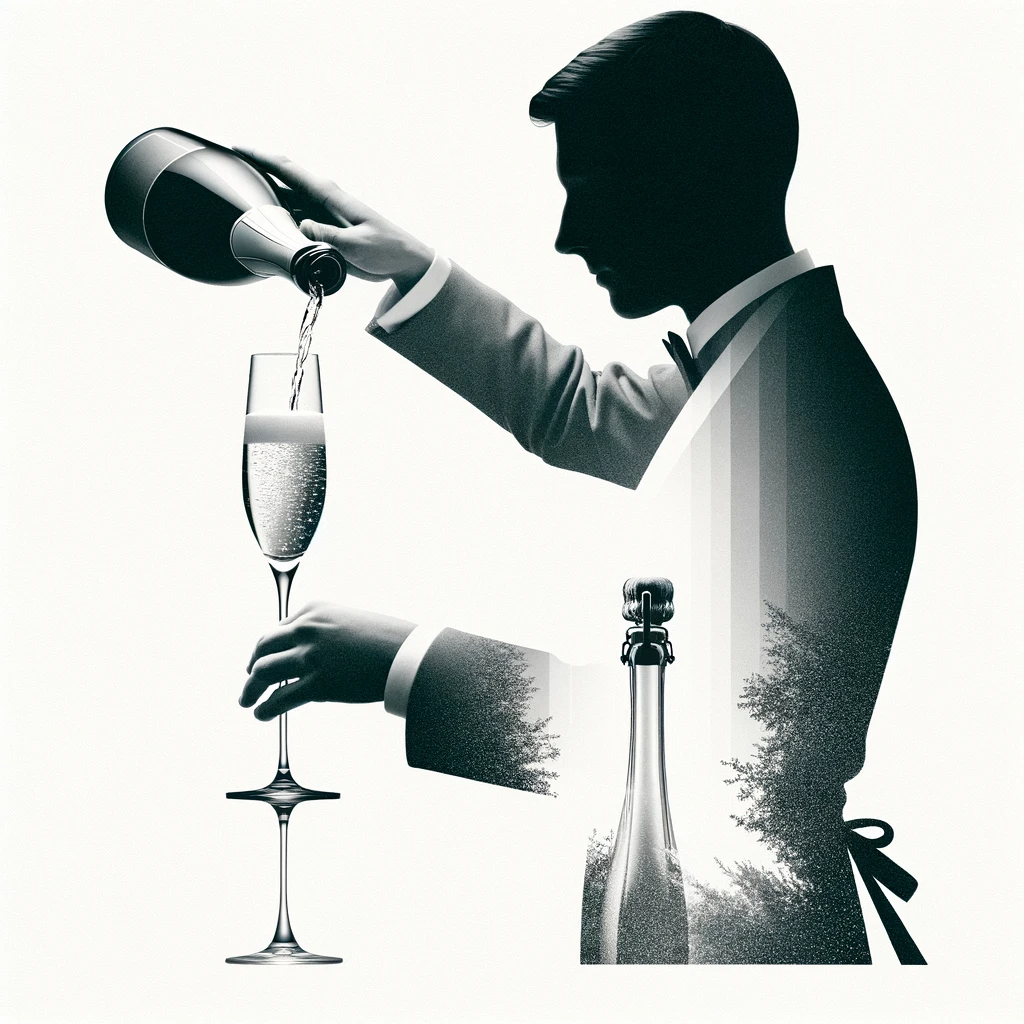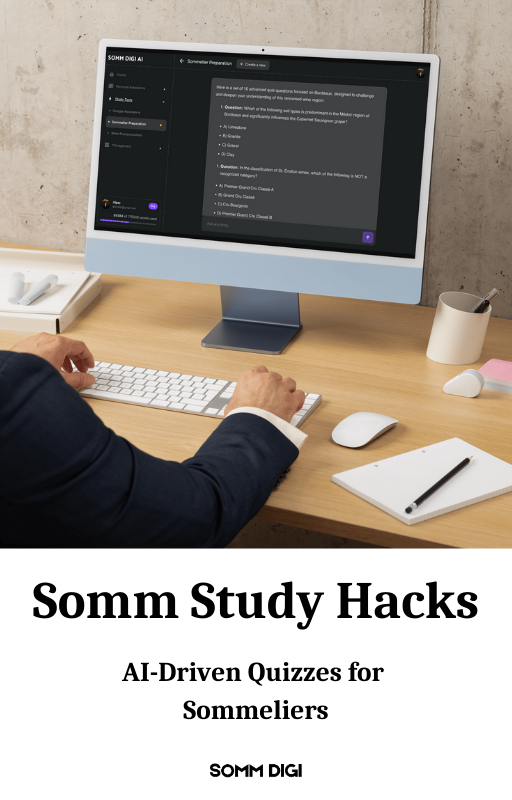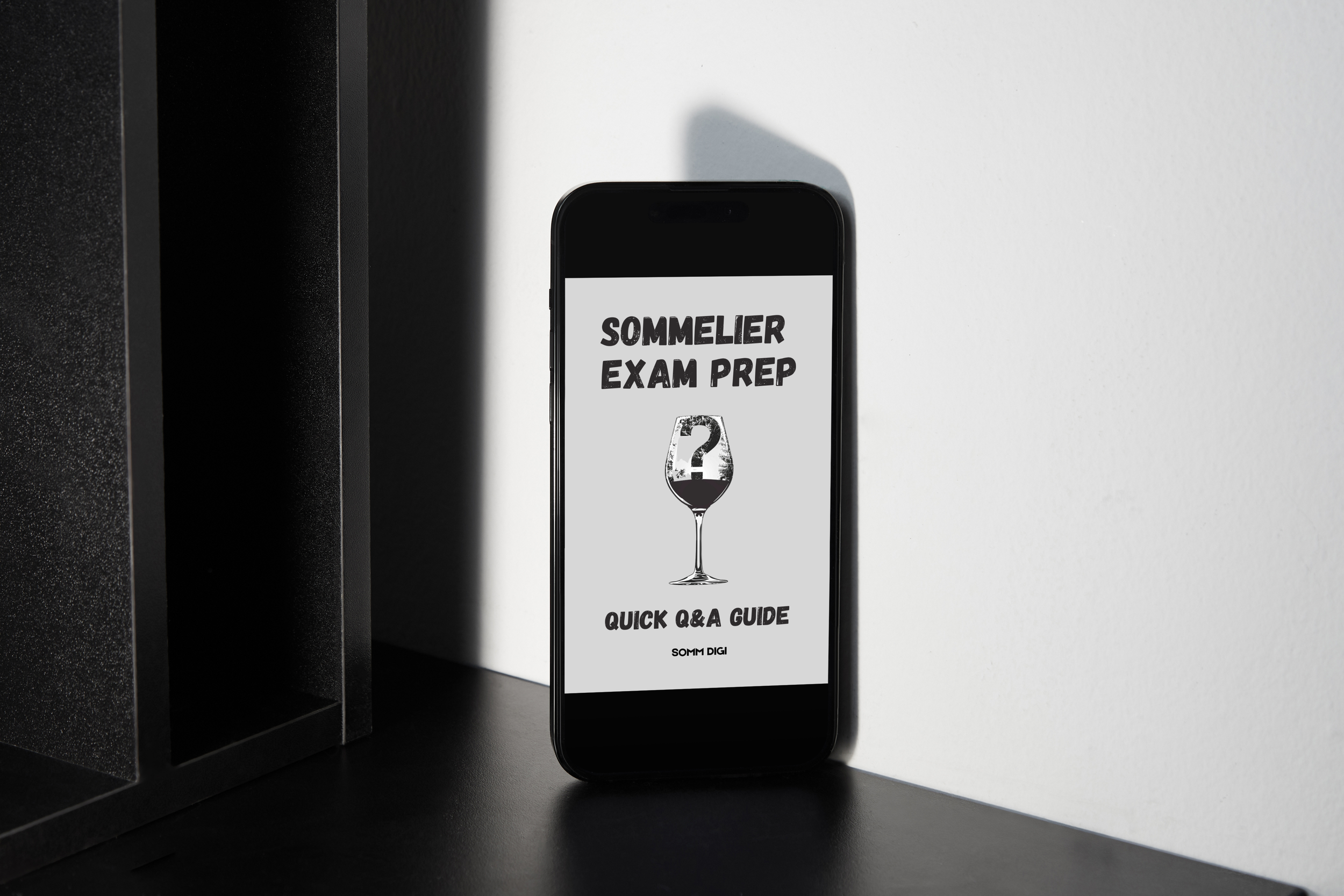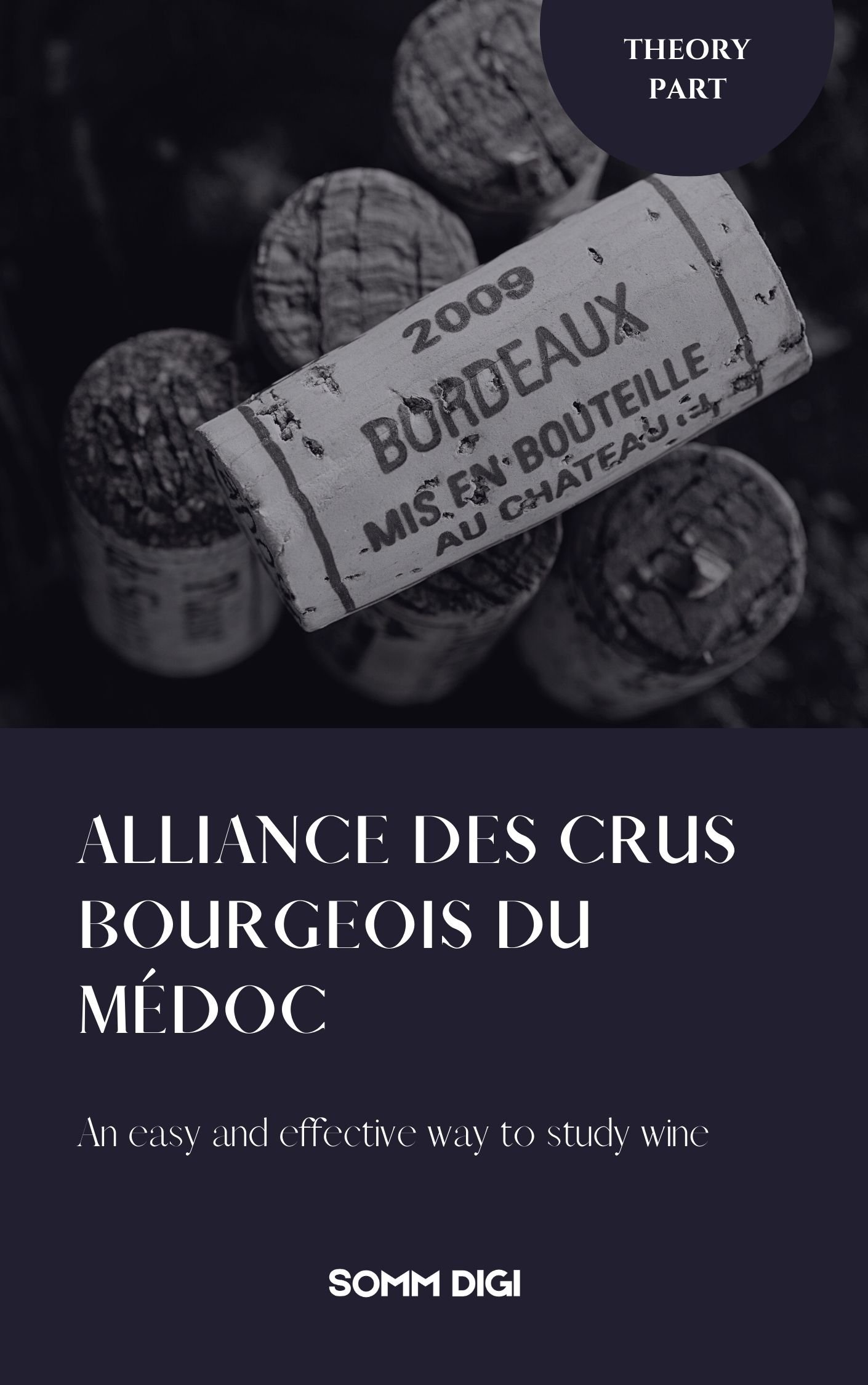Certified Sommelier Exam: Practical Wine Service Tips
I know that feeling all too well – the Certified Sommelier exam is just around the corner, and you're trying to figure out what to focus on. It can be a bit overwhelming, right? I've been there, scouring for key topics and tips that helped me succeed in the exam.
In this blog, I'm excited to share some specific tips for the Certified Sommelier exam, focusing on the practical part. If you're curious about more general advice on passing the exam, please check out my other blog post, where I cover those topics.
But here, let’s dive into what you should expect during the practical portion of the Certified Sommelier exam. I'm here to guide you, sharing the insights I wish I had in your shoes. So, let's get started and tackle this together!
The Service System Explained
The wine service exam for Certified Sommelier candidates is more than just a test; it demonstrates essential skills and knowledge in wine service.
Here's what students need to focus on:
Wine Service Skills: This is where you showcase how to present and serve wine correctly, emphasizing elegance and accuracy. It's all about demonstrating professional wine handling from bottle to glass.
Wine and Food Pairing: You must show your ability to pair wines with food effectively. This involves understanding flavor profiles and suggesting wines that enhance the dining experience.
Cocktail Knowledge: A sommelier should also be versed in classic cocktails. This exam part tests your knowledge of cocktail recipes.
Spirits Expertise: Besides wines and cocktails, a good grasp of various spirits is essential. You'll be expected to display your understanding of different spirits, including their characteristics and suitable serving methods.
Sparkling Wine Service: Precision and Etiquette
You'll be tasked with a sparkling wine service challenge in the Certified Sommelier exam. This exercise is designed to assess your precision in pouring and your skills in service etiquette.
The Task at Hand
Even Pouring: You must open a bottle of sparkling wine and pour it into eight glasses, ensuring each glass receives an equal amount. This tests your ability to control the pour, a crucial skill in sparkling wine service.
Tray Carrying: Carefully carry all eight glasses on a tray after pouring. This part of the task evaluates your balance and poise, as you'll need to walk confidently without spilling.
Serving the Guests: Finally, you will serve the wine to the guests. Remember to follow service etiquette: serve clockwise and always start with the ladies. This demonstrates not only your service skills but also your understanding of traditional serving protocol.
Tips for Success
Practice Pouring: Before the exam, practice pouring sparkling wine into multiple glasses to get a feel for distributing the wine evenly.
Tray Balance Exercises: Practice carrying a tray with filled glasses to build confidence and stability.
Etiquette Review: Refresh your knowledge of service etiquette, focusing on service order and how to navigate around a table gracefully.
Showcasing Your Service Skills
This exam part is about showcasing your service skills in a practical scenario. It's a chance to demonstrate your attention to detail, poise, and respect for traditional service standards.
Wine and Food Pairing: Harmonizing Flavors with Knowledge
A critical component of the Certified Sommelier exam is effectively pairing wines with food. This isn't just about making a recommendation; it's about creating a memorable dining experience through the harmony of flavors.
The Challenge of Pairing
During the exam, a Master Sommelier will ask you a dish and ask you to suggest a wine pairing. This is where your understanding of flavor profiles, wine regions, producers, and styles comes into play. It's not enough to just name a wine; you need to articulate why it's the perfect complement to the dish, discussing its region, producer, and style.
Depth of Knowledge Required
Region and Producer Knowledge: Be well-versed in notable wine regions and producers. Understanding the characteristics that distinguish each region and producer will add depth to your pairing explanations.
Old World vs. New World: If you recommend an Old World wine, be prepared to suggest a New World counterpart, and vice versa. This demonstrates your breadth of knowledge and flexibility in pairing.
Tips for Successful Pairing
Study Well-Known Producers: Create a list of well-known producers from various regions. Familiarize yourself with their styles and the typical flavor profiles of their wines.
Understand Flavor Profiles: Deepen your understanding of how different wine characteristics complement various food flavors and textures.
Practice Pairing Scenarios: Regularly practice with hypothetical dishes. Explain your choices out loud, as if you’re in the exam, to build confidence in your reasoning.
Stay Informed and Current: Keep up-to-date with emerging trends in wine and food. A contemporary pairing suggestion can showcase your awareness of the evolving culinary world.
Demonstrating Your Expertise
Remember, this section is your opportunity to demonstrate not just your wine knowledge, but also your understanding of gastronomy and the art of enhancing the dining experience. The more detailed and reasoned your explanations, the more you showcase your expertise and readiness as a sommelier.
Cocktail Knowledge: Focusing on the Classics
Your understanding of classic cocktails will be tested in the Certified Sommelier exam. While this section may not be as extensive as the wine portion, it's equally important. You can expect to be asked about classic cocktails, focusing mainly on their key ingredients.
Preparing for Specific Cocktail Questions
Key Cocktails to Study: While it's impossible to predict exactly which cocktails will be asked about, it's wise to focus on well-known classics. Make sure you're familiar with popular choices like the Martini, Old Fashioned, Manhattan, and Negroni.
Main Ingredients: For each cocktail, concentrate on memorizing the main ingredients. Know what spirits, mixers, and garnishes are typically used.
Brief Preparation Overview: Although the focus may be on ingredients, having a basic understanding of how these cocktails are prepared can be helpful. This shows a well-rounded knowledge of cocktail-making.
Tips for Exam Success
Study Efficiently: Since only a couple of cocktails are likely to be covered, use your study time efficiently. Deepen your knowledge of a select few rather than trying to cover every possible cocktail.
Remember the Classics: Prioritize cocktails that have stood the test of time in popularity and significance. These are more likely to be included in the exam.
Stay Calm and Confident: If asked about a cocktail you’re less familiar with, stay calm. Focus on delivering what you know confidently.
Showcasing Your Beverage Expertise
This part of the exam is an opportunity to demonstrate that your beverage expertise extends beyond wine. A solid grasp of classic cocktails, even if it's just the basics, reflects your versatility as a sommelier.
Spirits and Sweet Wine: Understanding Beyond the Basics
For the Certified Sommelier exam, it's important to have a good grasp of different spirits and sweet wines. This section tests your familiarity with various types, their characteristics, and how they are served.
Preparing for Specific Questions on Spirits and Sweet Wines
Armagnac and Other Spirits: Be prepared to answer questions about specific producers of spirits like Armagnac. Know where they come from and their unique qualities.
Knowledge of Kahlua and Similar Spirits: Understand the origins and production methods of spirits like Kahlua. Knowing their base ingredients and flavor profiles is key.
Sweet Wine Producers: Have a handle on some notable sweet wine producers. Be familiar with their styles and the regions they are associated with.
Focusing on the Details
Regional Knowledge: For spirits and sweet wines, regional knowledge can be crucial. Understand the geographical origins and how they influence the characteristics of these beverages.
Serving Methods: While detailed preparation techniques might not be the main focus, knowing the correct serving method for different spirits and sweet wines can be beneficial.
Navigating the Exam Questions
Study Selectively: Focus on well-known spirits and sweet wines that are likely to be featured in the exam.
Keep It Concise: When answering in the exam, be clear and concise. Provide the essential information without overcomplicating your response.
Conclusion: Bringing It All Together
I've tried to cover many aspects of the practical wine service exam to provide you with a comprehensive guide. Whether mastering the art of sparkling wine service or understanding the nuances of pairing wines with food, I hope you find these insights helpful in your journey to becoming a certified sommelier.
Please visit my general sommelier blog for a broader look at the Certified Sommelier exam, including other important aspects beyond the practical wine service. There, you'll find additional notes and insights that might be just what you need to feel more prepared.
Additionally, I'm excited to share that I've been working on an eBook filled with useful information and tips for aspiring sommeliers. Keep an eye out for it – it's designed to be a handy resource that you can download and refer to anytime.
Best of luck on your exam!
Remember, preparation and practice are your best allies in this journey. I'm rooting for you to succeed and join the esteemed ranks of certified sommeliers!


















